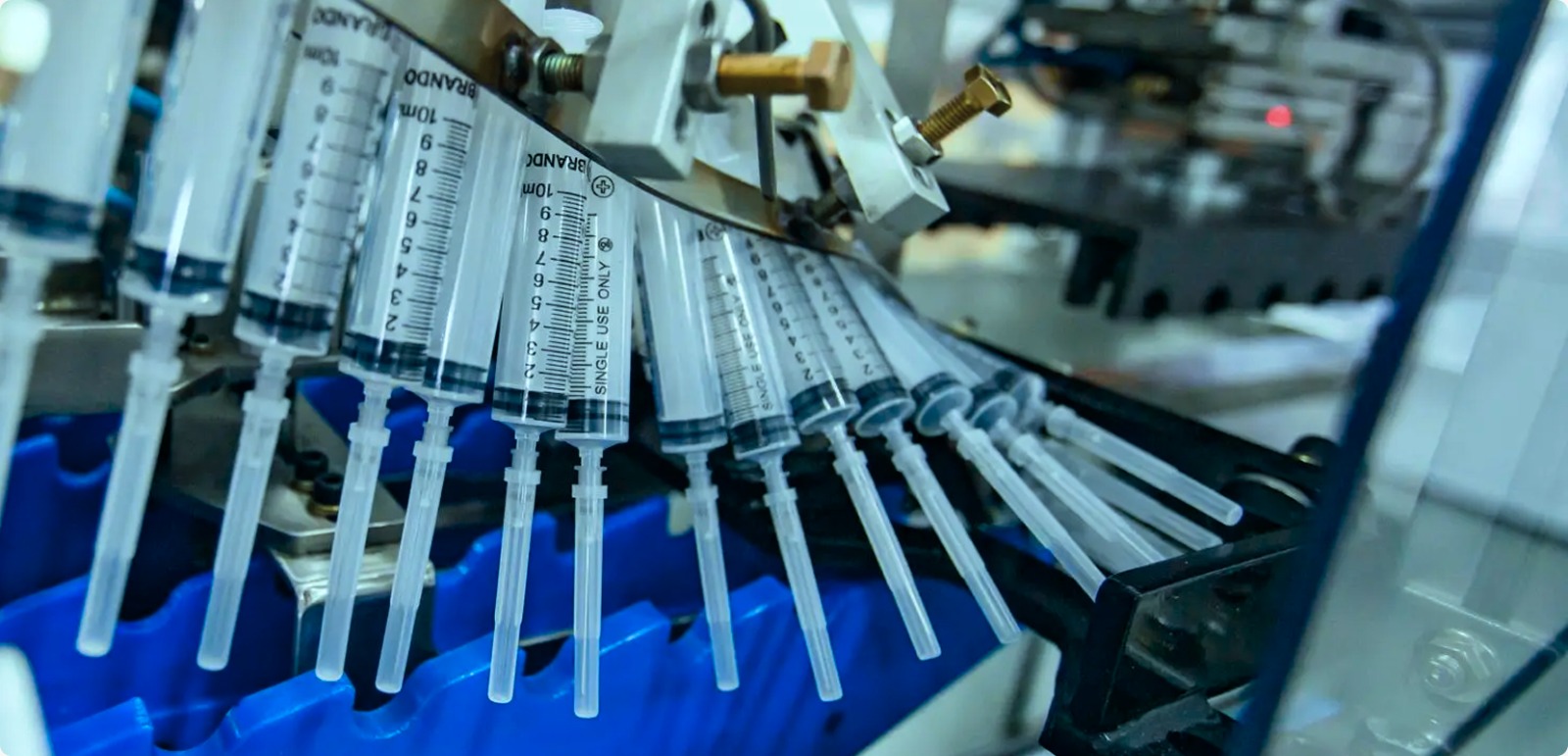In medical device manufacturing, quality isn’t just a benchmark — it’s a life-critical standard. Medical devices, particularly surgical and implantable devices, demand near-zero defect tolerance. Even the smallest flaw can trigger downstream consequences: from failed procedures and hospital brand-switching to FDA oversight that can last months.
Yet, despite stringent quality control processes, batch rejections still happen. And when they do, the impact is significant. For original equipment manufacturers (OEMs), the true risk isn’t just the cost of a rejected part. It’s reputational damage, loss of market share, and public visibility through FDA action. For contract manufacturers (CMs), the risks are equally steep: rework on rejected batches, missed KPIs, and ultimately, the loss of OEM business.
Fortunately, both OEMs and CMs are turning to AI-powered visual inspection to address these issues head-on. By combining artificial intelligence with advanced computer vision, these systems catch quality issues earlier, improving consistency more accurately, and at scale — dramatically reducing the risk of batch rejection, and creating traceable, defensible records of quality.
The Real Cost of Batch Rejection
A single rejected batch can set off a chain of costly setbacks. Here’s what’s at stake:
What’s more, batch rejection decisions are often based on small-sample inspections. Just a few units with minor surface defects, assembly errors, or sterilization issues can cause an entire batch to be discarded — even if the rest of the lot meets quality standards.
These risks are amplified when QA remains an end-of-line process. Delayed inspection means defects go undetected until after sterilization or shipment, resulting in avoidable rework, re-sterilization, and damaged trust between OEMs and CMs. As outlined in our new OEM-CM quality alignment report, this reactive model drives up costs and undermines production efficiency across the supply chain.
By shifting inspection upstream with AI-powered visual systems, manufacturers can detect issues earlier, enforce consistent quality standards, and build a traceable record of every decision, protecting both margins and reputations.
How AI-Powered Visual Inspection Works
AI quality inspection in medical devices pairs deep learning with high-resolution imaging to flag cosmetic and functional defects with greater precision than human inspectors or rule-based systems. It detects anomalies in real time — with high accuracy — before packaging or shipment, while applying tolerance thresholds to distinguish between critical flaws and acceptable blemishes
This capability is vital in medical manufacturing, where a minor imperfection may be purely cosmetic and not clinically relevant, or it might compromise the performance of a critical device. AI inspection systems help teams distinguish between the two, applying consistent thresholds at scale. Each unit inspected generates a digital record, ensuring traceability and accountability throughout the entire quality workflow.
How Akridata Helps:
Akridata’s AI-powered platform supports the entire inspection lifecycle:
- Vision Assist captures and inspects high-resolution images in-line or post-production.
- Vision Copilot enables rapid training and deployment of AI models tailored to specific product or defect types.
- Vision Command provides enterprise-level oversight, allowing manufacturers to monitor performance across sites, enabling global consistency and QA standardization.
AI-Powered Visual Inspection Use Cases
AI inspection isn’t a one-size-fits-all solution — it’s a flexible system that adapts to the specific challenges of medical device manufacturing. From detecting microscopic surface defects to standardizing inspections across global lines, these technologies are already delivering measurable value. Below are three high-impact scenarios where AI visual inspection is transforming quality assurance at scale
Surface Defect Detection
Surface defect detection for OEMs is one of the most critical and challenging aspects of medical device manufacturing. Pits, scratches, and occlusions are frequent reasons devices get flagged or rejected. These issues are often difficult to detect with the naked eye or rule-based systems, especially on intricate components. AI-powered systems offer a distinct advantage:
- Models trained on a variety of examples recognize a range of flaws, even under new conditions.
- Algorithms continuously learn from new images, improving accuracy over time.
- High-resolution cameras paired with AI reduce false negatives and catch early-stage issues.
In fact, according to McKinsey, AI-based visual inspection can improve defect detection accuracy by up to 90% compared to manual methods, making it a powerful tool for catching subtle anomalies early. But it’s not just about identifying flaws — it’s about understanding what matters. A tiny blemish on an implanted device, for example, may be purely cosmetic and not clinically significant. AI helps enforce those nuanced thresholds in real time, driving measurable ROI by reducing waste, minimizing rework, and helping manufacturers avoid costly recalls.
Akridata in Action: Catheter Tip Occlusion Identification
In one anonymized use case, Akridata worked with a medical device manufacturer to inspect the tip of a catheter, which features microscopic holes. Using Vision Assist, the system identified and classified each hole as clear or occluded. Copilot-trained models continuously refined detection accuracy over time, adapting to even the smallest variations and improving performance with each iteration.
Standardizing Inspection Across Sites
In distributed manufacturing environments, QA variability across sites creates risk. One facility’s pass may be another’s fail, resulting in higher rejection rates, introducing compliance gaps, and eroding trust across the supply chain.
Akridata’s platform supports centralized model management and version control across all sites, giving manufacturers the tools to:
- Maintain consistent definitions of what qualifies as a defect
- Roll out updates instantly across all facilities
- Ensure every site adheres to the same inspection criteria
This effectively gives manufacturers a single pair of eyes across every facility — a powerful shift for global management. It not only improves product reliability, but also helps manufacturers avoid many of the hidden pitfalls that signal it’s time to upgrade their inspection process.
The result? A single source of truth and a consistent standard of quality at scale.
Creating an Audit Trail with AI
In highly regulated environments, like medical device manufacturing, traceability isn’t optional, it’s foundational. Regulatory bodies such as the FDA and ISO require detailed, verifiable records of how quality decisions are made. That’s where AI-powered visual inspection can deliver transformative value.
Every product inspected by Akridata’s Vision Assist system generates an automated digital log that includes pass/fail results, timestamped images, and the AI model version used. This record of truth doesn’t just streamline internal QA, it strengthens accountability across the entire supply chain.
These inspection logs:
- Support faster, smoother audits by documenting every decision
- Provide clear evidence of due diligence and regulatory compliance
- Enable investigations into post-inspection issues, including damage during packaging, sterilization, or shipping
- Allow OEMs to re-inspect shipments using the exact model applied at the CM level, pre- or post-sterilization
This level of auditability is especially critical in a landscape where a single oversight can escalate into a Corrective and Preventive Action (CAPA) notice or even a public FDA article 386 event — both of which can lead to on-site inspectors, months of scrutiny, and reputational damage.
By embedding traceability into the inspection process, AI not only simplifies compliance, it helps manufacturers stay ahead of it. Learn how Akridata supports FDA-compliant medical device manufacturing.
Fewer Rejections, Stronger Compliance, Smarter Operations
AI-powered visual inspection is about more than catching defects, it’s about building a smarter, more resilient manufacturing operation. By reducing batch rejections, standardizing inspection across sites, and embedding traceability throughout the supply chain, AI helps medical device manufacturers protect both their bottom line and their brand.
For contract manufacturers, it means fewer rejected batches and clearer alignment with OEM expectations. For OEMs, it means consistent quality, better audit readiness, and reduced risk of costly recalls. And for both, it creates a shared foundation of trust, built on data.
Akridata’s platform is designed to help manufacturers scale quality inspection across global lines without compromise. It’s already helping leading teams align on quality standards and modernize their manufacturing inspection strategies.
With AI, you’re not just improving inspection — you’re transforming how quality is defined, measured, and delivered at scale.
Ready to move QA upstream?
Learn how medical device OEMs and CMs are cutting rework, improving throughput, and building more resilient manufacturing partnerships.



No Responses